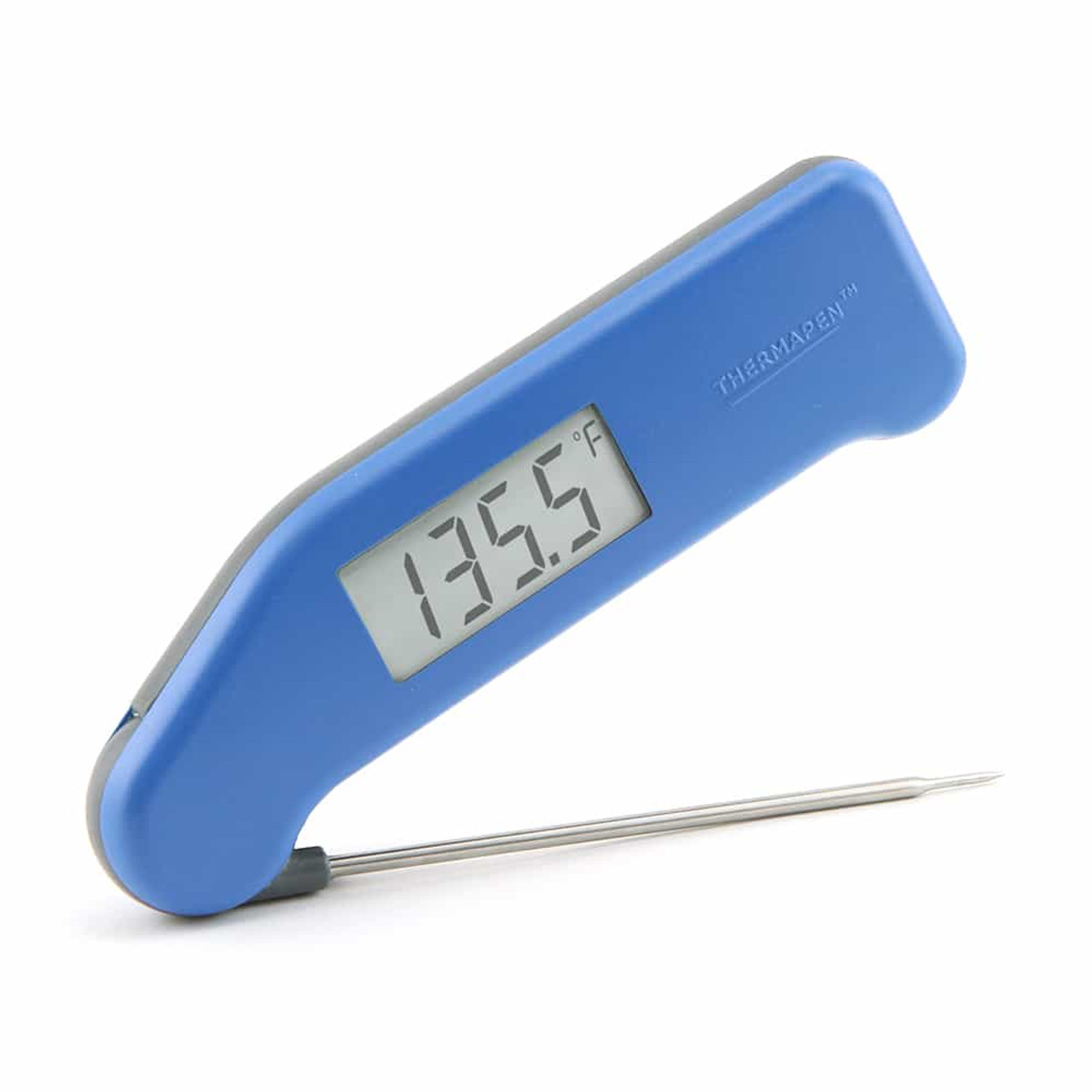A candy thermometer is not the same as a meat thermometer. Candy thermometers are designed specifically for monitoring the temperature of sugar-based syrup and candy recipes, while meat thermometers are used to measure the internal temperature of meat to ensure it is cooked to a safe level.
While both thermometers measure temperature, their design and functionality are different, making them unsuitable for interchangeability. Therefore, it is important to use the right thermometer for the corresponding task to achieve accurate results and ensure food safety. Choosing the appropriate thermometer will depend on the specific cooking needs, whether it be for candy-making or cooking meat accurately.

Credit: www.thermoworks.com
Understanding The Differences Between Candy Thermometers And Meat Thermometers
Candy thermometers and meat thermometers may seem similar, but they serve different purposes. Candy thermometers are designed specifically for making confections like caramel or toffee. They have a wider temperature range and often come with a clip to attach to the pot.
On the other hand, meat thermometers are used to ensure that meat is cooked to the right internal temperature to avoid undercooking or overcooking. They usually have a narrower temperature range and a probe that can be inserted into the meat.
Knowing the difference between these two types of thermometers is important because using the wrong one can lead to inaccurate readings and potentially ruin your dish. So, whether you’re making candy or cooking meat, make sure to use the appropriate thermometer for the best results.
Features And Design Variations
A candy thermometer and a meat thermometer are not the same. They have different features and design variations. When it comes to candy thermometers, there are various types available. One type is the probe-style candy thermometer, which is inserted directly into the candy mixture.
Another option is the digital candy thermometer, which provides accurate readings digitally. There are also glass candy thermometers, which are used by clipping the thermometer onto the side of the pan. On the other hand, meat thermometers have their own variations.
Instant-read meat thermometers give quick temperature readings, while oven-safe meat thermometers can withstand high temperatures in the oven. Leave-in meat thermometers can be inserted into the meat and left to monitor the temperature throughout the cooking process. So, although both types of thermometers measure temperature, they serve different purposes in the kitchen.
Temperature Range And Accuracy
A candy thermometer and a meat thermometer are not the same thing. They have different temperature ranges and accuracies. Candy thermometers are designed specifically for high-temperature cooking, such as making caramel or toffee. They can measure temperatures up to around 400 degrees fahrenheit accurately.
On the other hand, meat thermometers are used for cooking meat to safe internal temperatures. They typically have a lower maximum temperature range, usually up to around 200 degrees fahrenheit. When it comes to accuracy, both thermometers can be quite precise, but candy thermometers are known for their accuracy in high-temperature settings.
If you’re considering using a thermometer for high-temperature cooking or candy making, it’s essential to choose the right type based on your specific needs.
Versatility And Safety Considerations
A candy thermometer and a meat thermometer are not the same, taking their versatility and safety considerations into account. A candy thermometer is designed specifically for measuring the temperature of sugar syrups, while a meat thermometer is used to gauge the internal temperature of meat during cooking.
However, there are instances where you can use a candy thermometer for meat and vice versa. When using a candy thermometer for meat, ensure it has the appropriate temperature range and probe length. Similarly, when using a meat thermometer for candy, make sure it can accurately measure high temperatures.
Safety concerns arise when using thermometers interchangeably, as it can lead to food contamination risks. Therefore, it’s vital to clean and sanitize your thermometer properly to avoid cross-contamination between sweet and savory preparations. Remember, using the right thermometer for the right task will ensure both versatility and safety in the kitchen.
Frequently Asked Questions
Can I Use A Meat Thermometer As A Candy Thermometer?
Yes, a meat thermometer can be used as a candy thermometer as long as it has a wide temperature range.
What Is The Difference Between A Candy Thermometer And A Meat Thermometer?
The main difference lies in the temperature range and the specific features designed for candy or meat.
Can I Use A Candy Thermometer For Cooking Meat?
It is not recommended as candy thermometers might not have a wide enough temperature range for cooking meat.
Why Do Candy Thermometers Have A Clip?
The clip allows the candy thermometer to be securely attached to the side of the pot while cooking.
Are Digital Thermometers Better Than Analog For Both Candy And Meat?
Digital thermometers are more accurate and easier to read, making them a better choice for both candy and meat.
Final Things
While a candy thermometer and a meat thermometer may appear similar, they serve different purposes in the kitchen. A candy thermometer is designed specifically for making candies, syrups, and other sweet treats. It provides accurate temperature readings that are crucial for achieving the desired consistency and texture in your confections.
On the other hand, a meat thermometer is used to ensure the safety and doneness of cooked meats by measuring the internal temperature. It helps prevent undercooked or overcooked meats, and ultimately promotes food safety. Despite their differences, both thermometers are essential tools for any kitchen and can greatly enhance your cooking experience.
So, next time you embark on a culinary adventure, be sure to choose the thermometer that is best suited for your specific culinary endeavor. Happy cooking!

